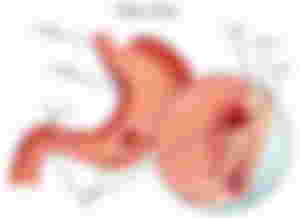Peptic Ulcer

Ulceration of the intestinal lining which penetrates to involve the muscle layer, caused by the action of the acid and pepsin secreted by the stomach. Peptic ulcers are found in the stomach and duodenum and less commonly in hiatus hernia. Ulceration occurs when there is a disturbance of the balance between the production of gastric juice and factors protecting the intestinal lining such as mucus. Many influences can disturb this balance, including stress and certain drugs. The most common symptom is gnawing or burning upper abdominal pain, relieved by milk or antacids. Diagnosis is confirmed by barium meal x-ray or Gastroscopy. Many peptic ulcers heal by themselves when precipitating factors are corrected and after a short period of treatment with antacids. Otherwise, the outlook for ulcer sufferers has been vastly improved by the introduction of the histamine H2 receptor blocking agents such as cimetidine, which reduce gastric secretion and promote healing of peptic ulcers. These medications have dramatically reduced the need for surgery, which is now performed only in the emergency treatment of complications such as perforation and severe bleeding.
Perthes' Disease

Degeneration of the upper growing end (epiphysis) of the thigh bone (femur), which may occur in children, particularly boys, between the ages of 4 and 10. Perthes' Disease is caused by disturbance of the blood supply to the epiphysis. The reason for this occurring is usually obscure. Symptoms include mild pain in the hip and sometimes in the knee, limping, and restricted hip movement. A child promptly diagnosed as suffering from Perthes' disease can be successfully treated with bed rest and a caliper or splint fitted to the hip to take the weight off the joint until healing is complete.

